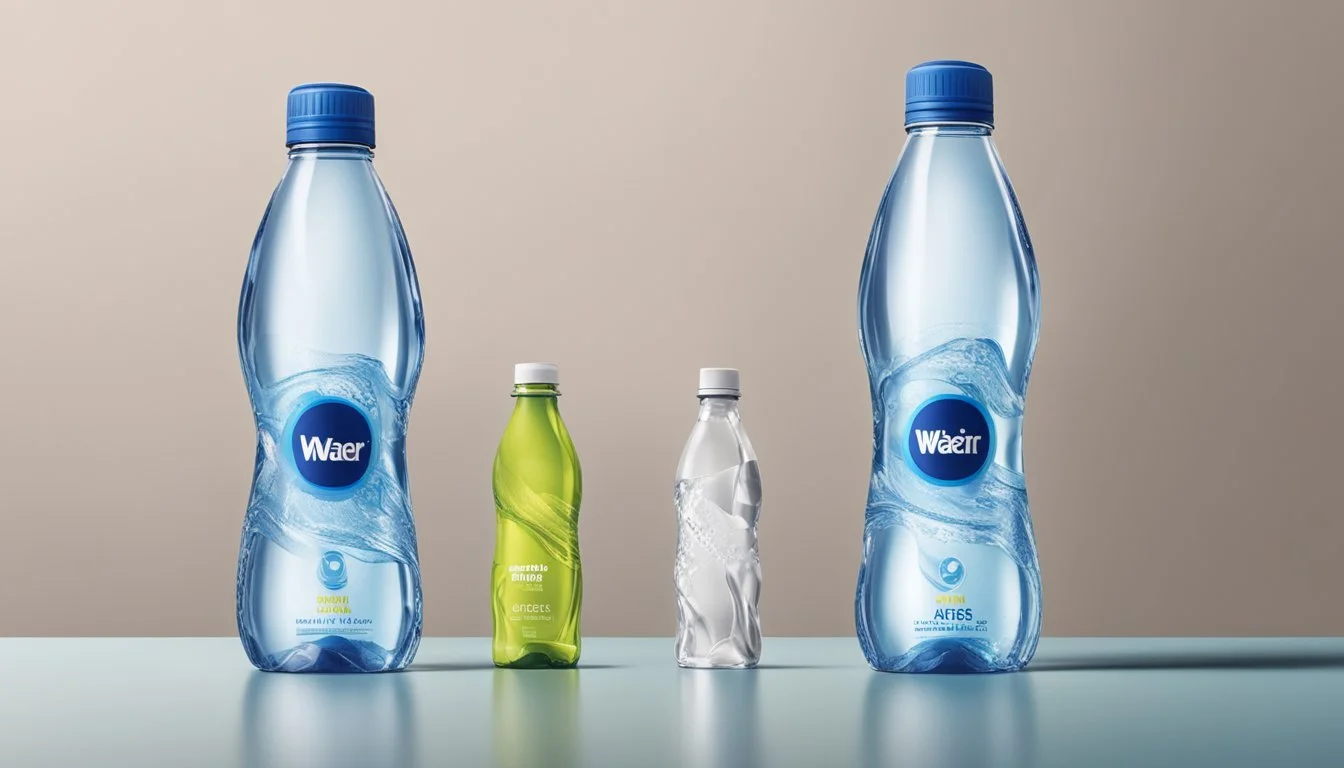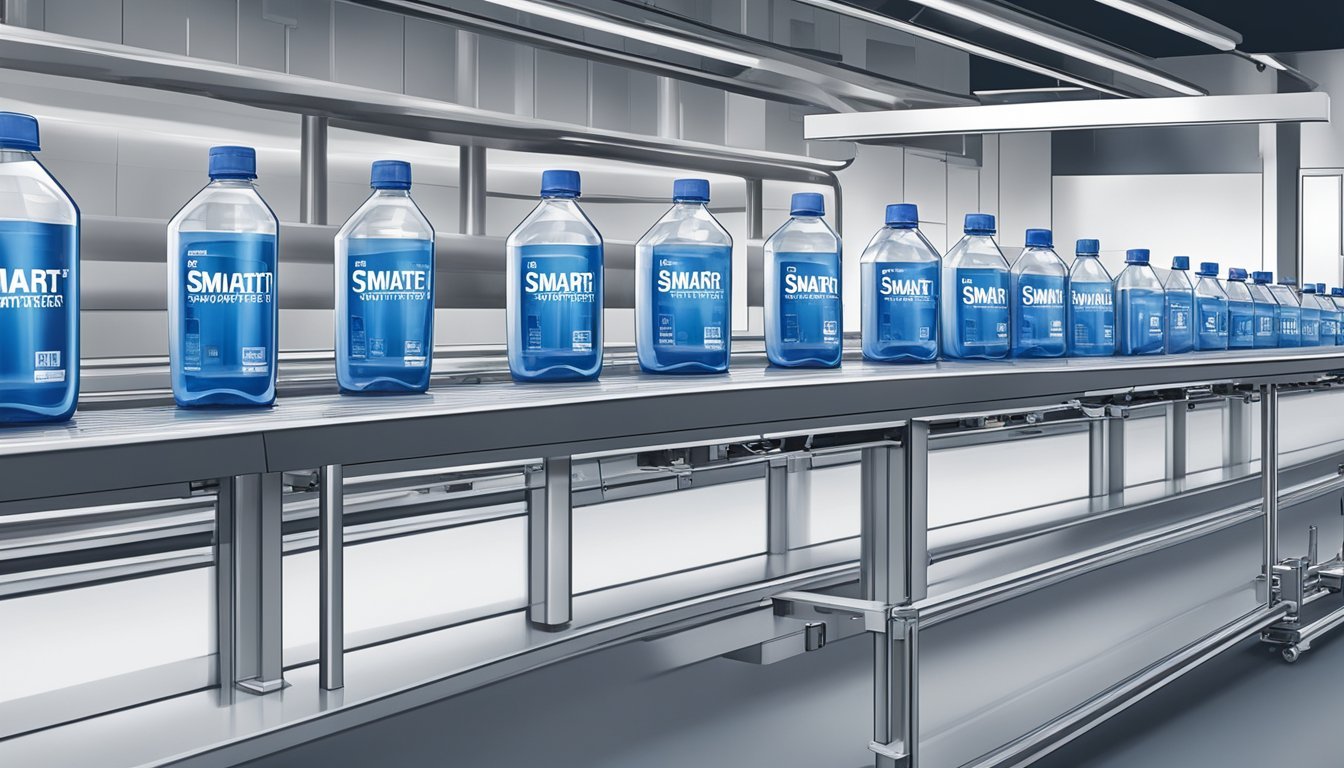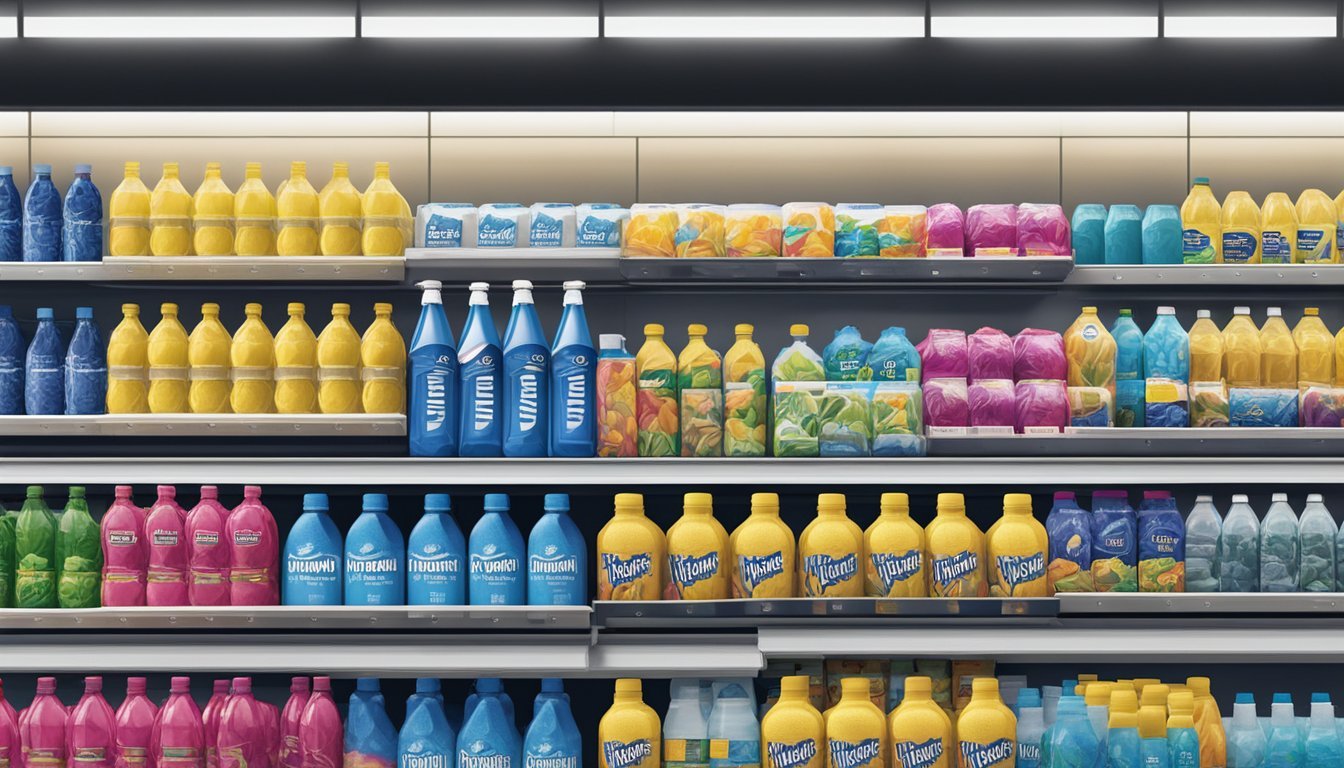Smartwater vs. Liquid Death
A Clear Comparison on Quality and Taste
In the realm of bottled water, two names often rise to the forefront: Smartwater and Liquid Death. Both brands have established prominent positions in the market, yet they cater to slightly different preferences and consumer values. For those seeking a smooth and neutral taste, Smartwater may have the edge, whereas Liquid Death offers a slightly mineral-y flavor that appeals to fans of distinct tastes.
Smartwater is known for its sleek design and enhanced water, which includes added electrolytes for more refined hydration. On the other hand, Liquid Death stands out with its unique packaging and marketing approach, using aluminum cans that are often considered more sustainable than plastic bottles. This aspect may incline environmentally conscious consumers toward Liquid Death.
Regarding cost, Smartwater tends to be priced higher per fluid ounce compared to Liquid Death. The decision often boils down to what buyers value more: the sleek, enhanced water experience from Smartwater or the bold, eco-friendly and cost-effective choice of Liquid Death. With these differences in mind, making an informed choice becomes easier.
Brand Overview
Smartwater and Liquid Death are two distinct players in the bottled water industry, each renowned for their unique approaches to hydration products. Smartwater is well-known for its vapor-distilled water and strategic partnerships, while Liquid Death stands out with its edgy branding and eco-conscious aluminum packaging.
History of Smartwater
Smartwater, a product of the Coca-Cola Company, was introduced in 1996. It quickly gained popularity due to its vapor-distilled production process, which involves purifying the water by evaporating it and then condensing it back into liquid form. Electrolytes like calcium, magnesium, and potassium are added for taste.
This water brand has positioned itself as a premium product, often endorsed by celebrities. It is marketed toward health-conscious consumers who seek purity and enhanced hydration.
Smartwater maintains a strong presence in supermarkets and retail stores across the United States, leveraging Coca-Cola’s extensive distribution network.
History of Liquid Death
Liquid Death was founded in 2017 and has made a significant impact with its bold marketing and commitment to sustainability. The water is sourced from the Austrian Alps and is available in both flat and sparkling varieties. The brand differentiates itself by packaging the water in aluminum cans, which are more recyclable than plastic bottles.
The company’s messaging includes an emphasis on reducing plastic waste, aligning with eco-conscious consumers. Its aggressive and unique branding, featuring skulls and heavy-metal aesthetics, has successfully attracted a younger audience.
Liquid Death can be purchased online and at various retail chains, including Whole Foods and 7-11, increasing its accessibility.
Production Processes
Smartwater and Liquid Death undergo very different production processes, each designed to enhance their hydration quality and taste. Smartwater utilizes vapor distillation, whereas Liquid Death focuses on spring water sources and a thorough filtration process.
Vapor Distillation of Smartwater
Smartwater is produced through a technique called vapor distillation. This process mimics the hydrological cycle, where water is evaporated, leaving impurities behind, and then condensed back into liquid form. The resulting distilled water is pure and free of contaminants.
Electrolytes are added post-distillation to enhance taste and provide essential minerals. This method ensures that Smartwater delivers a clean, crisp, and smooth drinking experience. The water is packaged in plastic bottles, making it easy for consumers to carry and use.
Source and Filtration of Liquid Death
Liquid Death sources its water from natural springs, emphasizing the use of high-quality sources. The filtration process includes several stages, which may involve reverse osmosis to remove impurities while retaining essential minerals.
The natural mineral content gives Liquid Death a slightly mineral-y taste, distinguishing it from other brands. Unlike Smartwater, Liquid Death uses aluminum cans for packaging, which is considered more environmentally friendly and preserves the water’s freshness. This choice of packaging is part of the brand's unique marketing and sustainability focus.
Nutritional Comparison
When comparing Smartwater and Liquid Death, it's important to look at their mineral content, electrolyte enhancement, and the absence of contaminants. Each aspect reveals different health benefits and considerations for consumers.
Mineral Content
Smartwater undergoes a vapor distillation process, stripping the water of impurities and minerals before selectively adding back electrolytes such as calcium, magnesium, and potassium. This ensures a crisp and clean taste.
Liquid Death sources its water from natural freshwater sources, often retaining some natural minerals. This provides a slightly mineral-y taste, less processed compared to Smartwater, emphasizing its natural purity.
While both provide trace minerals, Smartwater’s approach ensures consistency, whereas Liquid Death's natural sourcing aims for a more authentic mineral profile.
Electrolyte Enhancement
Smartwater is specifically designed with added electrolytes for taste, primarily using calcium chloride, magnesium chloride, and potassium bicarbonate. These minerals are added to enhance hydration, making the water suitable for athletes or people looking for more balanced hydration.
Liquid Death does not boast added electrolytes. Its composition relies on naturally occurring elements found in its source water, making it a more straightforward choice for those preferring minimal processing.
Electrolyte addition in Smartwater aids in hydration and taste, particularly beneficial post-exercise. Liquid Death sticks to a purer form, maintaining its naturally balanced content.
Absence of Contaminants
Smartwater uses vapor distillation, removing impurities and contaminants effectively. This method ensures a high level of purity, catering to individuals worried about waterborne contaminants.
Liquid Death relies on its natural sourcing and quality control but may not undergo the same extensive purification processes. However, its aluminum packaging over plastic helps in reducing contamination from container degradation over time.
For those prioritizing ultra-purity and consistent absence of contaminants, Smartwater’s distillation process is superior. Liquid Death, while naturally pure, may appeal to those who trust in the safety of high-quality source water and prefer sustainable packaging.
Packaging and Sustainability
Smartwater and Liquid Death approach packaging and sustainability differently, each with its own strengths and weaknesses. This section examines the materials used in their packaging, the environmental impact of their bottles, and the sustainability initiatives adopted by both brands.
Materials Used
Smartwater is packaged in plastic bottles, specifically PET (Polyethylene Terephthalate). This is a common plastic used for its strength and ability to be recycled. PET is also BPA-free, which is crucial for health safety.
Liquid Death, on the other hand, utilizes aluminum cans. Aluminum is known for its durability and recyclability. Unlike plastic, aluminum can be recycled indefinitely without losing quality. This makes it a more sustainable choice from a materials standpoint.
Environmental Impact of Bottles
Plastic bottles, like those used by Smartwater, contribute significantly to environmental waste. Even though PET plastic is recyclable, a large portion still ends up in landfills or oceans. This plastic can take hundreds of years to decompose, further harming wildlife and ecosystems.
In contrast, Liquid Death's aluminum cans have a significantly lower environmental impact. Aluminum recycling consumes less energy than producing new aluminum, making it more energy-efficient. Additionally, the high recyclability rate of aluminum means less waste accumulates in landfills compared to plastic.
Brands' Sustainability Initiatives
Smartwater has made strides in improving its sustainability practices. The brand has committed to using recycled plastic in their bottles and aims to reduce their environmental footprint. They also promote recycling programs to encourage consumers to recycle used bottles.
Liquid Death positions itself as a brand committed to eco-friendliness. They sponsor environmental causes and initiatives, such as donating a portion of profits to ocean cleaning efforts. Liquid Death also emphasizes the use of aluminum over plastic as a key part of their sustainability strategy.
Overall, the choice between Smartwater and Liquid Death comes down to evaluating the materials used, the environmental impact, and the sustainability efforts of each brand.
Taste and Refreshment Quality
Smartwater and Liquid Death offer distinct taste experiences. Analyzing their flavor profiles, aftertaste, and hydration efficiency can help consumers decide which brand is better suited for their needs.
Flavor Profiles
Smartwater is known for its neutral and smooth taste. Its vapor-distilled process and added electrolytes contribute to a clean, crisp flavor.
Liquid Death, on the other hand, has a slightly mineral-y taste. This gives it a more pronounced and earthy flavor, which some drinkers may find refreshing. The differing profiles can cater to varied preferences, with Smartwater offering subtlety and Liquid Death providing a richer taste experience.
Aftertaste and Purity
Aftertaste plays a significant role in determining the overall refreshment quality of bottled water. Smartwater’s neutral flavor usually results in a clean finish without lingering flavors.
Liquid Death, with its minerally taste, may leave a slight aftertaste. This is typically minimal and does not overpower the drinking experience. Purity is a selling point for both brands, but their distinct processes—vapor distillation for Smartwater and sourcing from natural springs for Liquid Death—contribute to different aftertaste experiences.
Hydration Efficiency
Both brands aim to provide efficient hydration. Smartwater’s added electrolytes are designed to enhance water intake and make it more effective in replenishing the body.
Liquid Death also hydrates efficiently, owing to its natural mineral content. Though it lacks added electrolytes, the natural composition of minerals still offers effective hydration. Therefore, while Smartwater emphasizes an added electrolyte advantage, Liquid Death relies on the purity and natural composition of its source to achieve effective hydration.
Consumer Experience
The consumer experience with Smartwater and Liquid Death varies notably, especially in aspects such as bottle design, availability, and pricing. Each brand brings distinct advantages and areas for consideration.
Bottle Design and Convenience
Smartwater's sleek, tall bottles are designed for convenience, fitting easily into cup holders and backpacks. The clear plastic showcases the water's purity, contributing to a premium feel.
Liquid Death’s can design stands out. The aluminum cans are eco-friendly and appealing, resembling beer cans. Consumers appreciate the novelty and the environmental message. However, cans are less convenient for resealing compared to Smartwater’s plastic bottles.
Both brands offer portable and stylish options, but the choice depends on personal preference for resealability and eco-friendliness.
Market Availability
Smartwater enjoys wide distribution in many retail and online outlets. It is readily available at stores like Whole Foods and Amazon, making it easy for consumers to purchase.
Liquid Death, while growing in popularity, is not as universally accessible. It can be found in certain health stores and online retailers, but its market penetration is still expanding.
For those in urban areas or who prefer online shopping, both options are accessible. However, consumers in less-served regions might find Smartwater's availability more reliable.
Price Point Comparison
Smartwater tends to be priced higher due to its premium branding and added electrolytes. A typical price per bottle on Amazon or at retail stores like Whole Foods can range significantly, often making it more expensive than average bottled water.
Liquid Death also commands a premium price, partly due to its unique packaging and branding. However, it is generally on par with or slightly lower than Smartwater’s price point.
Consumers looking at the cost will find that both options are in the premium category, though careful shoppers might notice slight price variations depending on the purchase platform and quantity.
Health and Wellness Impact
Hydration and daily water intake are essential aspects to consider when comparing Smartwater and Liquid Death. Both have specific benefits for overall health, hydration, and sports performance.
Hydration and Sports Performance
Smartwater is marketed primarily for its added electrolytes ― sodium, calcium, and magnesium ― which can support hydration, especially during intense physical activities. These electrolytes aid in muscle function and maintaining fluid balance, similar to sports drinks like Gatorade, but without the added sugars.
Liquid Death, on the other hand, offers two main variations: still and sparkling. While it doesn't contain added electrolytes, its aluminum packaging is eco-friendly and may appeal to those avoiding plastic. Both still and sparkling variations provide the hydration needed for daily activities, although they might not be as targeted for sports performance as Smartwater.
In sports, maintaining hydration is crucial. Smartwater may offer a slight edge due to its electrolyte content. However, the choice heavily depends on individual preferences and specific hydration needs.
Daily Water Intake Recommendations
For daily hydration, both Smartwater and Liquid Death are viable options. The average recommended water intake is about 3.7 liters for men and 2.7 liters for women, according to the National Academies of Sciences, Engineering, and Medicine. Both brands can help meet these recommendations, though each has unique benefits.
Smartwater’s added electrolytes make it a good option for people who want more than just plain water. These electrolytes can help replenish lost minerals, particularly for those who engage in physical activities regularly.
Liquid Death focuses on a minimalist approach with pure mountain water, which may suit those who prefer water without any additives.
Both options are suitable for daily hydration needs, and the choice largely depends on individual taste and lifestyle preferences.
Market Presence and Consumer Trends
Smartwater and Liquid Death have carved out distinctive niches in the bottled water market, influenced by demographic preferences, brand loyalty, and consumer perception.
Popularity Among Demographics
Smartwater, a product of Coca-Cola, targets health-conscious consumers with its electrolyte-enhanced water and pure taste.
It has gained traction among urban professionals and fitness enthusiasts.
Offering both standard and alkaline varieties, it provides options that appeal to a range of dietary preferences.
In contrast, Liquid Death takes a unique approach with its punk rock aesthetic appealing to younger, environmentally-conscious consumers.
Using aluminum cans instead of plastic, it attracts an audience concerned about sustainability.
Key demographics for Liquid Death often include millennials and Gen Z buyers who prioritize eco-friendly packaging.
Brand Loyalty and Perception
Smartwater has built a reputation for reliability and quality, benefiting from Coca-Cola's extensive distribution network.
Its branding emphasizes purity and wellness, fostering trust and loyalty among regular buyers.
Moreover, Smartwater's marketing often involves partnerships with fitness and wellness influencers, reinforcing its health-centric image.
Liquid Death, with its edgy branding, has stirred a cultural sensation.
Its loyalty stems from a combination of distinctive marketing and commitment to sustainability.
The brand's bold stance and plain-speaking tone appeal to consumers looking for authenticity.
Product availability is increasing, particularly in urban and online markets, showing growing acceptance and repeated purchasing behavior.
More About Smartwater
Core Hydration vs Smartwater: Which Bottled Water is Better?
Icelandic Glacial vs Smartwater: Which Bottled Water is Better?
Mountain Valley Spring Water vs Smartwater: Which Bottled Water is Better?
Nestle Pure Life vs Smartwater: Which Bottled Water is Better?
San Pellegrino vs Smartwater: Which Bottled Water is Better?
Smartwater vs Aqua Carpatica: Which Bottled Water is Better?
Smartwater vs Cascade Mountain: Which Bottled Water is Better?
Smartwater vs Crystal Geyser: Which Bottled Water is Better?
Smartwater vs Hawaii Volcanic: Which Bottled Water is Better?
Smartwater vs Hawaiian Springs: Which Bottled Water is Better?
Smartwater vs Kirkland Signature: Which Bottled Water is Better?
Smartwater vs Richard's Rainwater: Which Bottled Water is Better?
Smartwater vs Solan de Cabras: Which Bottled Water is Better?
Smartwater vs Talking Rain AQA: Which Bottled Water is Better?
Smartwater vs Whole Foods 365: Which Bottled Water is Better?
Smartwater vs Whole Foods Italian Still Mineral water: Which Bottled Water is Better?
More About Liquid Death
Aqua Carpatica vs Liquid Death: Which Bottled Water is Better?
Core Hydration vs Liquid Death: Which Bottled Water is Better?
Hawaii Volcanic vs Liquid Death: Which Bottled Water is Better?
Hawaiian Springs vs Liquid Death: Which Bottled Water is Better?
Ice Mountain vs Liquid Death: Which Bottled Water is Better?
Icelandic Glacial vs Liquid Death: Which Bottled Water is Better?
Liquid Death vs Cascade Mountain: Which Bottled Water is Better?
Liquid Death vs Crystal Geyser: Which Bottled Water is Better?
Liquid Death vs Crystal Lake: Which Bottled Water is Better?
Liquid Death vs Essence pH10: Which Bottled Water is Better?
Liquid Death vs Kirkland Signature: Which Bottled Water is Better?
Liquid Death vs Proud Source: Which Bottled Water is Better?
Liquid Death vs Richard's Rainwater: Which Bottled Water is Better?
Liquid Death vs Simple Truth: Which Bottled Water is Better?
Liquid Death vs Talking Rain AQA: Which Bottled Water is Better?
Liquid Death vs Whole Foods 365: Which Bottled Water is Better?
Liquid Death vs Whole Foods Italian Still Mineral water: Which Bottled Water is Better?
Mountain Valley Spring Water vs Liquid Death: Which Bottled Water is Better?
Nestle Pure Life vs Liquid Death: Which Bottled Water is Better?
Poland Spring vs Liquid Death: Which Bottled Water is Better?
Purely Sedona vs Liquid Death: Which Bottled Water is Better?
San Pellegrino vs Liquid Death: Which Bottled Water is Better?
Solan de Cabras vs Liquid Death: Which Bottled Water is Better?





